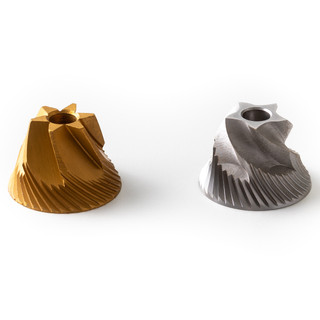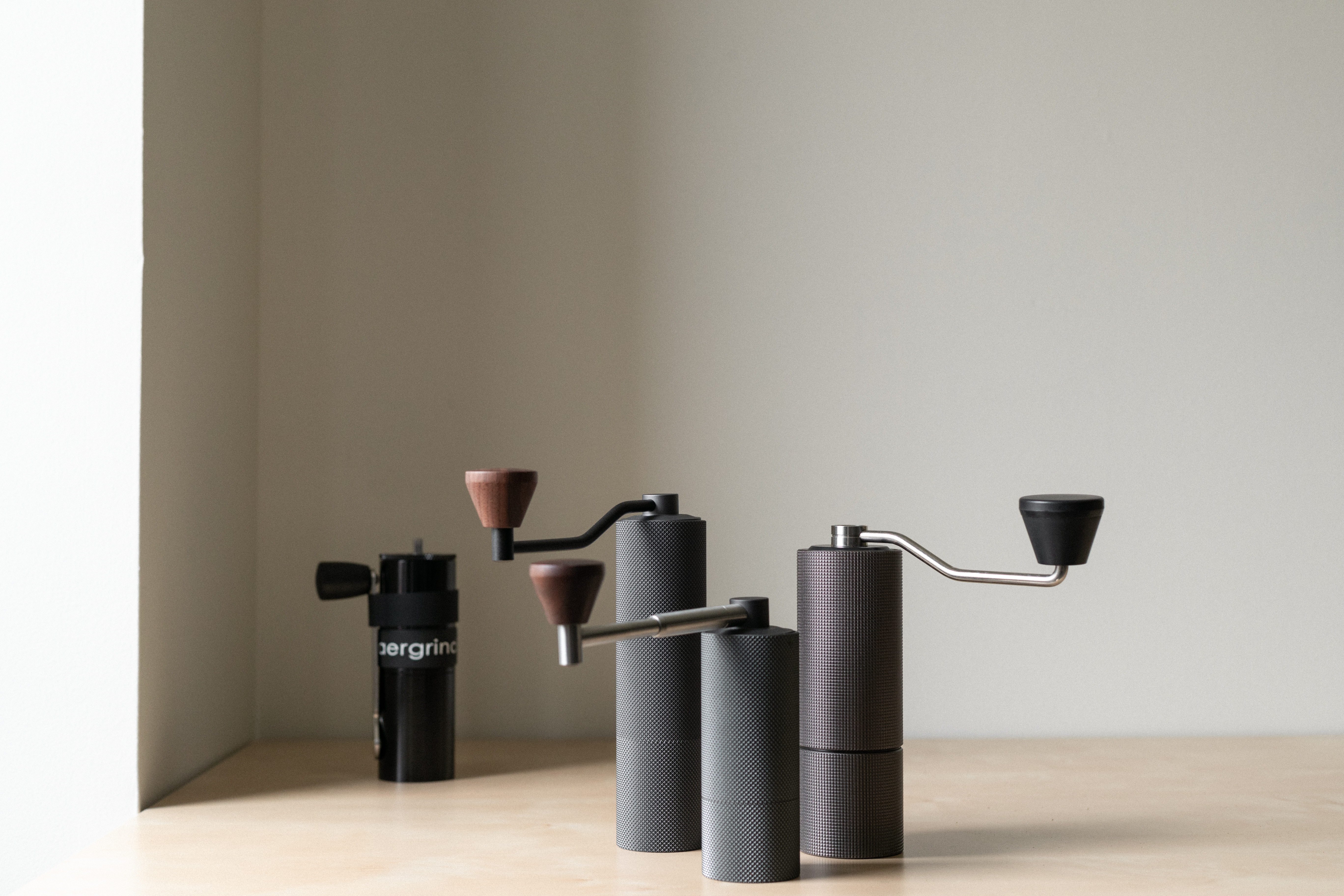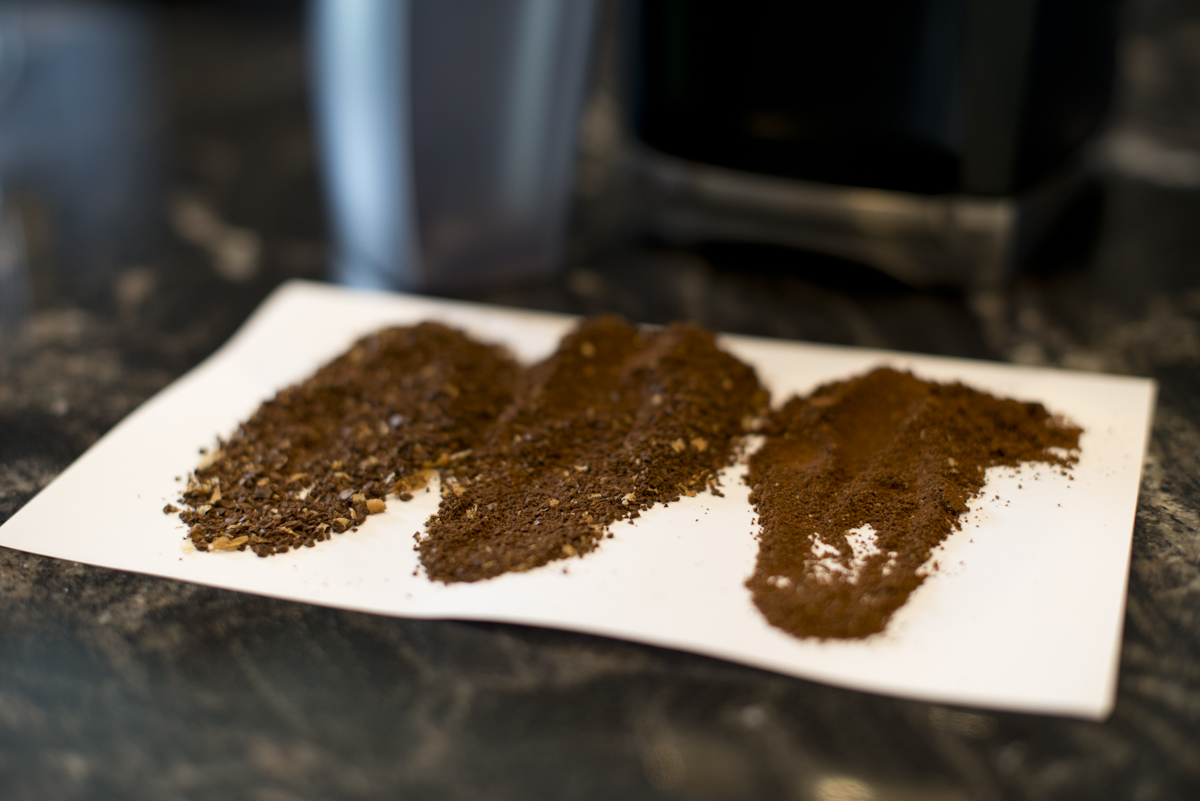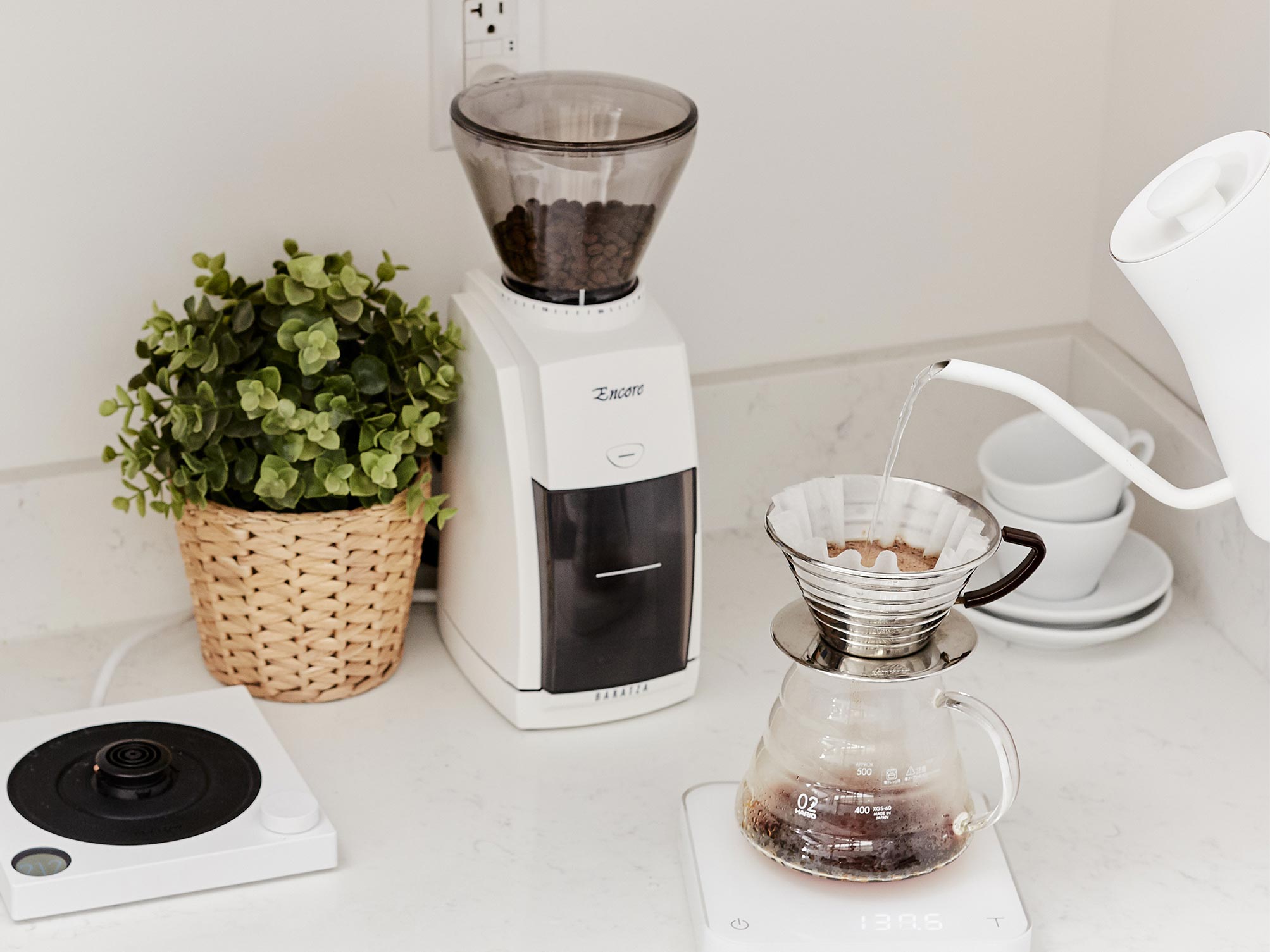Burr Grinder Basics
So you want to buy a coffee grinder? Good move. Freshly ground coffee tastes better than pre-ground coffee in most cases. And you want to buy a burr grinder? Great move. But which one? Should you grab any old thing on the shelf at the big box store or the cheapest model you can find in a cursory internet search? The short answers are no and no. The longer answer is below. In this guide we'll tell you what to look for in a burr grinder and why.
Burr vs. Blade
To kick off this guide, let's first take a look at the lower level tiers of grinding devices. Most are familiar with blade grinders, which operate rather like a blender. A spinning blade indiscriminately swings, like a batter in a t-ball game, at the coffee beans, hitting them into various sizes and shapes. What you are left with is a mix of fines (very small particles) and boulders (very large particles) with some middle-size pieces. This is the throwing-spaghetti-at-the-wall method of making coffee. The boulders will be extracted at a much different rate, e.g., much more slowly, than the fines, resulting in a cup that tastes simultaneously bitter and sour.
To offer an analogy, let's say you want to dissolve some sugar in water. If you dump a teaspoon of granulated sugar into the water and stir it up, it shouldn't take too long for it to fully dissolve. But if you use a sugar cube instead, it will take noticeably longer to fully break down and disappear. That's partly because there is less surface area on the sugar cube, meaning the water has to work its way through the outer layers of sugar molecules before it can get to the inner ones. The smaller the sugar granules are, the easier it will be for them to dissolve in water. Coffee is going to behave similarly–the smaller the grinds, the more easily they will give up their flavors to the hot water you're brewing with.
To avoid cup after cup of muddy sourness, you're going to want coffee particles that are pretty similar in size, and that's just what a burr grinder can do for you. All burr grinders use the same general principle: they use specially engineered cutting surfaces with teeth and valleys and a precise adjustment mechanism to cut the coffee in a more controlled manner, like a skilled chef using a sharp knife, resulting in more consistent particle sizes. Blades have no adjustment. They are set into a position and that is it. Burrs, on the other hand, which come in pairs with the cutting surfaces facing, are set on threads, so can be moved closer or farther away from each other, allowing control of particle size. Blades: no control. Burrs can be flat, conical, or a hybrid of both, and typically come in either steel or ceramic.
Beware False Burrs
As with many consumer products, you need to beware the imitators and snake oil. On the market today are a number of grinders below or right around $100 that profess to be burr mills, but are little better than blade grinders gone incognito. These are the false burrs of the world.

As mentioned before, burrs should have sharp opposing cutting surfaces. But false burrs only get half that equation right. Rather than cutting with sharp edges, false burrs bludgeon the beans with large, flat teeth that are often paired up with weak motors. You'll wind up with ground coffee, but the consistency won't be very good, especially in the medium-to-coarse range. Those teeth add a good deal of wobble to the burrs themselves, because they don't break up the coffee as easily as a sharp surface would, and the impact forces the burrs slightly out of alignment each time they make contact.
Generally speaking, most electric burr grinders under $100 will have false burrs, and your best bet is to look for machines with conical steel burrs. Conical burrs work just as well as flat, and if they're made of steel you can bet they'll be using sharp edges rather than chunky teeth, and your grind quality will be all the better.


Brewing on a Budget
The hard truth about burr grinders is that they tend to cost more than the more well-known blade models, and more than the false-burr imitators. The sky is apparently the limit when it comes to pricing; it’s not uncommon these days to see an EK43 S or other, similarly sized commercial grinders, on a kitchen counter. But the affordable ones exist, too, especially in the Baratza line.
Covering the consumer grinder market from entry level to full-on professional, Baratza has been a boon to coffee lovers for over a decade. Their entry level grinder, the Encore, features conical steel burrs and 40 steps of adjustment, with a grind quality suitable for anyone brewing drip to french press. It’s not the right machine when it comes to grinding for espresso, but we found it can still get the job done if absolutely no other options exist for you. The plastic used in the body and some internal parts helps to trim away the bulk and cost, but coming in at 7 pounds, the Encore is still a weighty contender. Priced right around $170, the Encore is one of the best bang-for-buck grinders around, delivering outstanding performance at a wallet-friendly price. If Baratza's history is any indication, an Encore should last you longer than five years with good maintenance. Even if you're grinding four days a week, that's about 1,043 uses–coming out to a bit over $0.16 per use, a small price to pay for a better cup of coffee.
Other models on the market in this range include the Capresso Infinity and Bodum Bistro, both conical steel burr grinders. Both can be found for under or around $100, and will give similar grind quality, but they do have their faults and neither has the stand-out service and support that Baratza offers. For that reason, Baratza remains a favorite of specialty coffee enthusiasts at just about any price point.
Grinding by Hand
If you are willing to forego an electric motor, hand grinders have come a long way in recent years and are worthy of consideration. Several Hario models fall below $50, all offering acceptable grind consistency and overall performance.
Hario makes both the Mini Mill and the Skerton, which use ceramic conical burrs that remain sharp for some time. They are both easy to adjust, and while they falter a bit in the coarse range, they are perfectly suitable for pour over brewing, and the Skerton can even be modified to be stepless for moderate espresso performance.

Going beyond the $100 price range, you can begin to find even more intriguing hand mills, built for performance and precision. Timemore has several options-one for beginners, one for travel, and others. Knock just released new versions of its two offerings: Feldgrind and Aergrind. Orphan Espresso created the Lido and Pharos grinders around commercial steel burr sets, housing them in more affordable structures meant to appeal to the home enthusiast. By removing the motor and electronic components, a hand grinder has the ability to achieve a much better grind consistency, even better longevity, for a lower price-at the expense of convenience, of course. Myriad options exist. If you can’t figure out which one to get, consult our comprehensive comparison of hand grinders.





